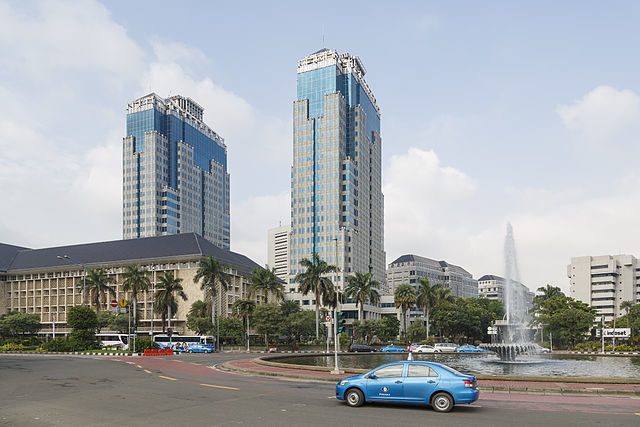The Indonesian government is now assessing the potential impact of the intensifying trade conflict between the United States and China with a view to improving Indonesia’s export structure and promoting a stronger regional economic integration to minimize the fallout.
The move comes as the United States threatened June 18 to slap a 10% import duty on US$200 billion worth of Chinese goods after Beijing decided to raise the import duty on $50 billion worth of US commodities in response to similar measures taken by Washington on Chinese goods, reported Indonesia’s state-run Antara News.
“Indeed, this trade war will come into force next month, and from now on, the minister of economy has the opportunity to evaluate what the pros and cons are. We will examine its impact to avoid negative ones,” Vice President Jusuf Kalla said June 26.
Saying that the trade conflict between the two superpowers will affect Indonesia, he cited the need to examine the extent of the impact on the economy and the opportunities that can be utilized from the situation.
The United States earlier announced a 25% import tariff on 818 products effective from July 6, 2018, and a charge on 1,300 products from China valued at $50 billion.
Earlier, Indonesia’s senior economist Mari Elka Pangestu said the phenomenon of protectionism and the possibility of a trade war are becoming the topics of conversation nowadays, as they are seen to disrupt world trade, especially involving the markets of traditional countries.
She said the regional economic integration of Asian countries can help outweigh protectionism since the region contributes 40% to the world economy.
Therefore, the ASEAN Economic Community, as well as talks on the Regional Comprehensive Economic Partnership (RCEP) and the Comprehensive and Progressive Agreement for Trans-Pacific Partnership (CPTPP), needs to be reinforced, she further said.
“Because if the Asian countries grow, then it will also contribute to the growth of the world economy,” Pangestu said.
Meanwhile, Coordinating Minister for Economic Affairs Darmin Nasution observed that improving the national export structure is important to overcome the impact of potential trade wars.
“We have to prepare a policy both on industry and natural resources to improve our export performance,” Darmin said.
He said Indonesia has to look for any opportunity open in the trade war, adding the country can’t afford to remain passive in a situation that threatens the country’s economy.
He said the country has to improve its trade performance, and cut the current account deficit, which has been one of the causes of rupiah depreciation.
Meantime, a legislator of the Prosperous Justice Party (PKS) opined that the European Union can offer an opportunity and provide a solution to the problem of the US-China trade war.
“(The European Union) offers an opportunity that could be developed, especially in the economic field, to come out of the trap of the US-China trade war,” Handi Risza, PKS secretary, noted.
Europe is one of the influential investors in Indonesia, so the opportunity should be utilized by the Indonesian government, he explained.
No ripples yet
So far, the impact of the trade war threat on Indonesia is still not felt, said the news report. In fact, Indonesia’s trade with the U.S. and China continues to increase.
“Trade continues to rise despite trade wars,” head of Central Statistics Agency (BPS) Kecuk Suhariyanto said.
Based on data from the BPS, the value of non-oil exports to China in May 2018 amounted to $278.9 million, up 15.37% compared to April 2018.
The value of non-oil and gas exports to the United States amounted to $143.4 billion, up 10.03% compared to the preceding month.
In the January-May 2018 period, China remained Indonesia’s largest export destination, with a value of $10.24 billion, up 15.05% year-on-year, followed by the United States, at $6.87 billion, or an increase of 10.91% year-on-year.
Photo: CEphoto, Uwe Arenas









